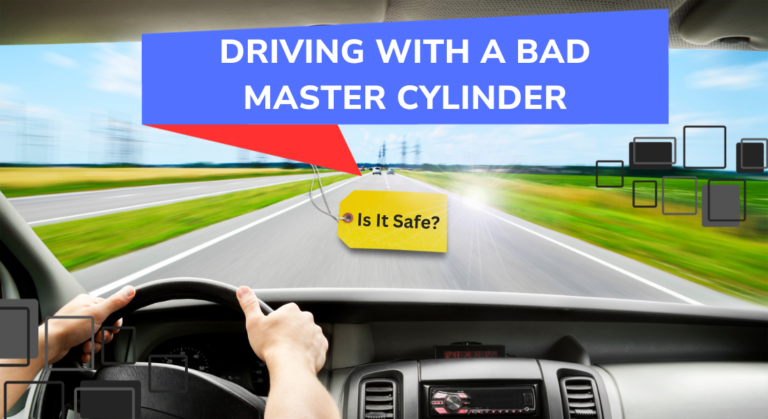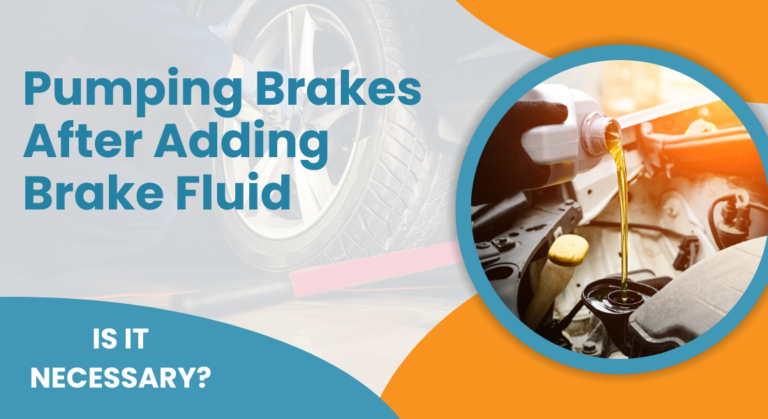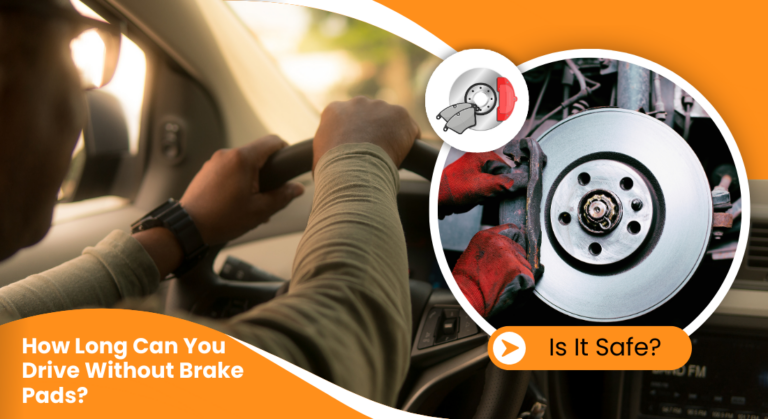What Happens If My Brake Pad Falls Off? – The Consequences
Imagine the terrifying scenario of a brake pad falling off while driving. The consequences can be dire, impacting your ability to stop effectively and posing a serious risk to your safety and the safety of others.
Literally, brake pads allow you to control your speed and bring your vehicle to a complete stop when necessary. Continue reading this article to understand the causes of brake pad detachment, among other related topics.
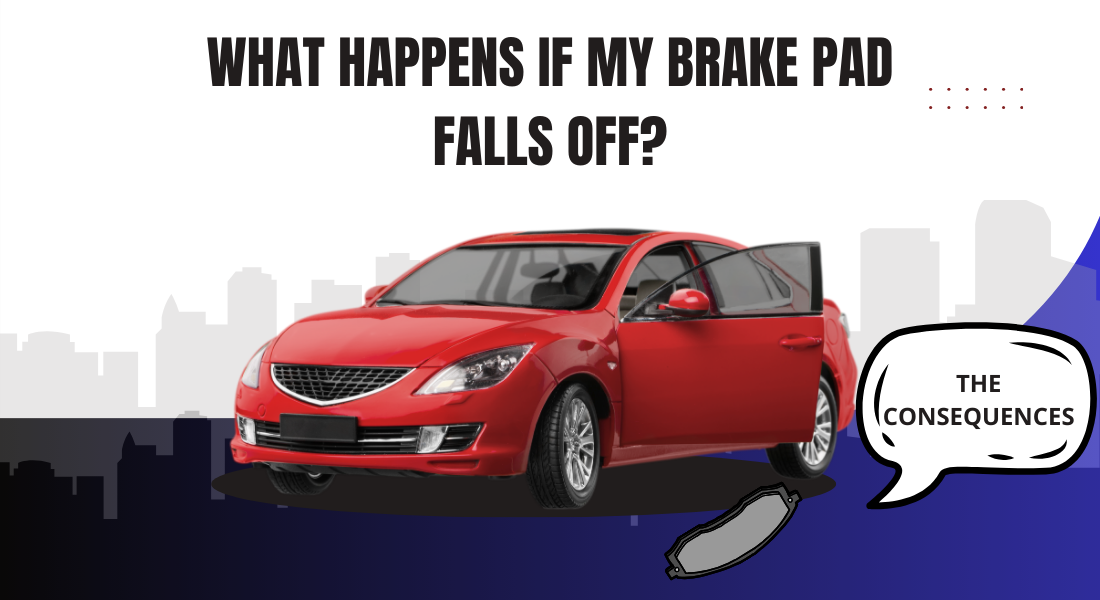
What Happens If The Brake Pad Falls Off?
When a brake pad detaches, the braking system’s functionality and performance suffer. Without the friction generated by the brake pad against the rotor or drum, the vehicle’s ability to decelerate or come to a complete stop is severely hampered.
Let us discuss the consequences of a brake pad falling off in detail.
1. Reduced Braking Efficiency
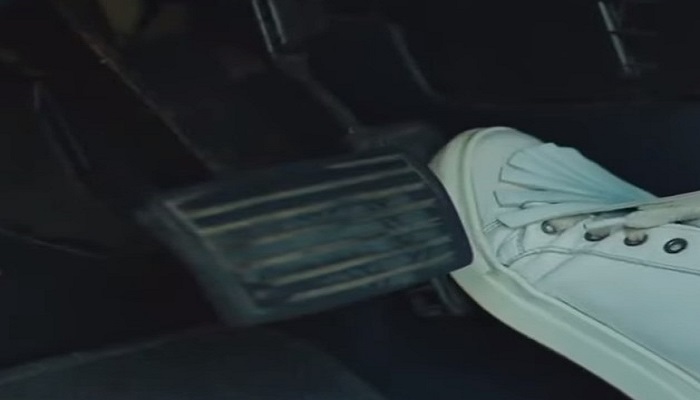
A detached brake pad’s most immediate and noticeable effect is a significant reduction in braking efficiency. Brake pads are designed to create friction against the rotor or drum, converting the moving vehicle’s kinetic energy into heat and stopping it.
The braking system’s ability to generate sufficient stopping power is jeopardized without the necessary friction the brake pad provides.
Read Also: How Long Can You Drive Without Brake Pads? – Is It Safe
2. Increased Stopping Distances
The time it takes for the vehicle to slow down or stop is significantly increased. That is because the remaining brake pads cannot fully compensate for the loss of friction caused by the detached pad.
This increased stopping distance can have a domino effect, especially in emergencies with critical split-second reactions. It spoils your ability to respond quickly and avoid accidents, increasing the likelihood of a collision.
3. Compromised Vehicle Control
A detached brake pad can also impair your control of the vehicle. As braking efficiency declines, so does the braking system’s ability to distribute braking force evenly across the wheels. This can cause braking power imbalances, resulting in uneven braking or the vehicle pulling to one side during braking.
Maintaining a straight path can be difficult due to impaired control, especially during sudden or hard braking maneuvers. It raises the chances of skidding, losing control, and colliding with other vehicles or objects.
Read Also: Why Is Brake Pad Rubbing On Rotor? – How To Stop!
4. Potential Damage To Other Brake Components
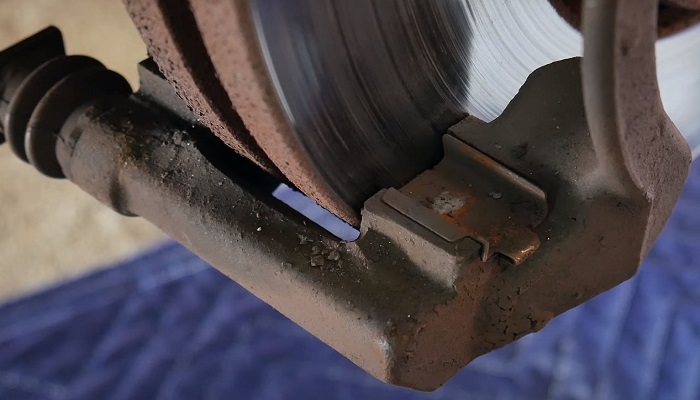
Separating a brake pad can cause a ripple effect, potentially causing damage to other braking components. When a loose or detached brake pad moves within the braking system, it can impact and wear down other parts, such as the caliper, rotor, or drum.
This can result in additional costs for repairs or replacements and extended downtime for the vehicle while repairs are made.
5. Risk Of Accidents And Personal Injury
The consequences of a brake pad falling off increase the risk of accidents and personal injury.
Increased stopping distances, compromised vehicle control, and potential damage to other brake components increase the likelihood of collisions.
Read Also: Can Worn Brake Pads Cause ABS Light to Come On?(Find Now)
Why Do Brake Pads Fall Off?
Understanding the causes of brake pad detachment is critical for preventing such incidents and ensuring your brakes perform optimally. The causes include:
Installation Errors
Improper installation is one of the most common causes of brake pad detachment. Suppose the adhesive or bonding material used to secure the pad to the caliper or brake shoe is insufficient or incorrectly applied during the brake pad replacement process. In that case, it can result in a loose connection.
Poor-Quality Materials
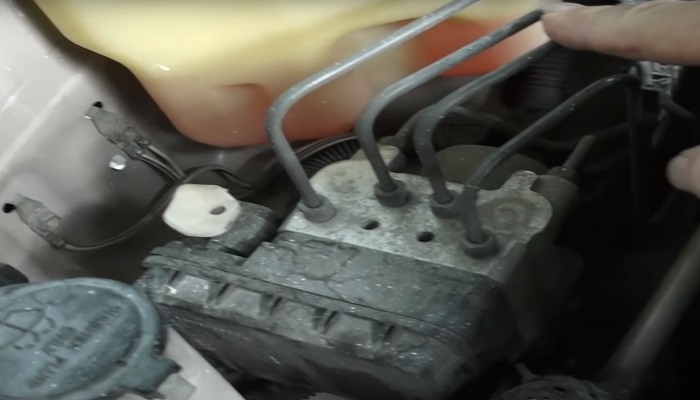
The quality of the brake pads is critical to their durability and dependability. Using low-quality or counterfeit brake pads can result in premature wear, deterioration, and detachment.
Inferior materials may be unable to withstand the heat, pressure, and friction generated during braking. This causes them to separate from the caliper or brake shoe.
Read Also: What Causes Brakes Pulsating When Stopping? – Fix Now
Extreme Heat and Heavy Braking
During prolonged or intense braking, such as when driving downhill or in stop-and-go traffic, brake pads are subjected to extreme heat. Excessive heat can weaken the bonding material’s adhesive properties, resulting in the brake pad detaching.
Neglected Maintenance and Wear
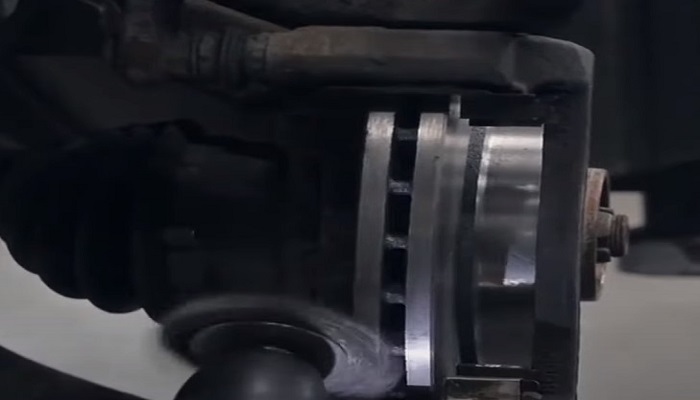
Failure to perform routine brake maintenance and exceeding the brake pads’ recommended wear limits can contribute to their detachment. Brake pads naturally wear down over time due to friction with the rotor or drum.
If they are not replaced on time, the remaining material may become too thin to provide secure attachment, raising the risk of detachment.
Manufacturing Defects
While it is uncommon, manufacturing flaws can result in brake pad detachment. Faulty manufacturing processes or design flaws can compromise the integrity of the brake pads, making them more prone to detachment.
Purchasing brake pads from reputable manufacturers and suppliers is critical to reducing the possibility of such defects.
Signs Of A Loose Or Detached Brake Pad
Detecting a loose or detached brake pad is crucial for promptly addressing the issue and ensuring your safety on the road. Here are some telltale signs:
- Unusual Noises: Listen for squealing or grinding noises while braking, indicating metal-on-metal contact between the brake rotor/drum and the remaining brake pad.
- Reduced Braking Power: You may notice decreased responsiveness, requiring more pedal pressure to achieve the desired deceleration.
- Vibrations or Pulsations: As the remaining brake pads engage with the rotor or drum, the uneven distribution of braking force can cause the pedal to pulsate or vibrate.
- Uneven Wear: Because the detached pad no longer contributes to braking friction, the remaining pads bear a disproportionate burden. This uneven distribution of wear can result in uneven pad thickness or tapering, which can be seen visually.
Read Also: No Brake Pressure After Changing Calipers: Why & How To Fix?
What To Do If Your Brake Pad Falls Off?
Here are the appropriate actions to help mitigate risks and prevent further damage to your vehicle’s braking system.
Stay Calm
Stay calm and avoid panicking, as sudden or erratic reactions can increase the likelihood of accidents. Focus on maintaining control of the vehicle and preparing to take immediate action.
Activate Hazard Lights and Signal
To alert other drivers of your situation, activate your vehicle’s hazard lights to indicate a problem. Use appropriate turn signals to communicate your intention to safely maneuver or pull over to the side of the road.
Gradually Reduce Speed and Increase the Following Distance
With a faulty braking system, you must modify your driving style. Reduce your speed gradually by easing off the accelerator pedal well before any required stops or intersections.
Allow for a significantly increased following distance to compensate for the longer stopping distances caused by the detached brake pad.
Engage the Emergency Brake
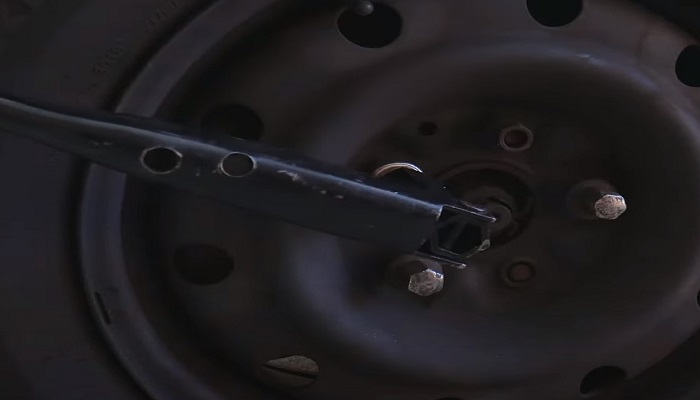
If your vehicle has an emergency or parking brake, use it to supplement the braking power. Engage the emergency brake gradually and evenly to avoid sudden skidding or loss of control.
Be aware that relying solely on the emergency brake for braking can cause the rear wheels to lock up, so use it with caution.
Replace the Brake Pad
- Using a jack, carefully lift the vehicle at the designated jacking points.
- Fully remove the nuts and carefully remove the wheel. Set it aside safely, ensuring it does not roll away.
- Locate the brake caliper and use the appropriate wrench or socket set to loosen and remove these bolts.
- Gently slide the detached brake pad out of the caliper bracket. Take note of the orientation of the old pad to ensure proper installation of the replacement pad.
- Clean the caliper bracket using a wire brush to remove debris or rust. Apply a thin layer of brake grease to the bracket’s contact points.
- If your vehicle has a piston-style brake caliper, it must be reset to accommodate the thickness of the new brake pad. This can be done using a C-clamp or a brake caliper piston tool(our pick), following the instructions provided by the tool manufacturer.
- Slowly and evenly compress the caliper piston until it is fully retracted.
- Carefully position the new brake pad in the caliper bracket, ensuring it aligns correctly with the rotor or drum. Make sure it is securely in place.
- Reinstall the brake caliper over the new brake pad and align it with the bracket. Insert and tighten the bolts or guide pins according to the manufacturer’s specifications.
- Place the wheel back onto the wheel hub, lining up the lug nut holes with the wheel studs. Thread the lug nuts onto the studs by hand, then use the lug wrench to tighten them in a star or crisscross pattern. Here is a video to help you understand more.
Preventive Measures For Brake Pad Issues
Proactively maintaining your vehicle’s braking system is critical for ensuring optimal performance. Here are some measures you can take:
Regular Brake Inspections
Schedule regular brake inspections with a qualified mechanic or service center. A comprehensive brake inspection will assess the condition of your brake pads, rotors or drums, calipers, brake lines, and other components.
Monitor Brake Pad Thickness
Monitor the thickness of your brake pads regularly. Most brake pads have wear indicators that signal when they have reached the minimum allowable thickness. The pads must be replaced if they appear thin or close to the wear indicators.
Use Quality Brake Pads
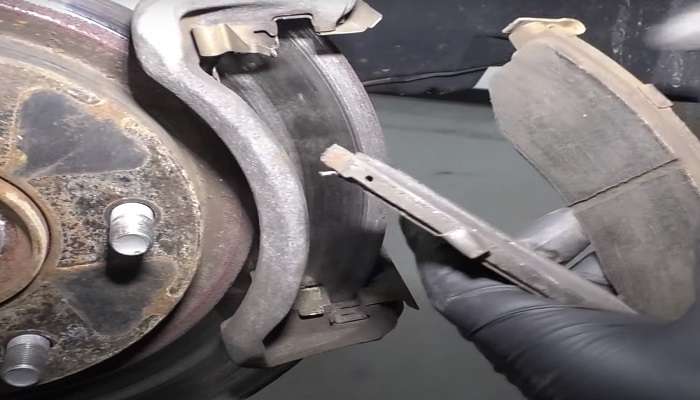
When replacing brake pads, opt for high-quality, reputable brands. Quality brake pads are designed to provide optimal friction, heat dissipation, and durability. They are less likely to detach, wear unevenly, or cause excessive rotor wear.
Follow Manufacturer Guidelines
The vehicle’s owner’s manual provides valuable information on recommended maintenance intervals, inspection procedures, and specifications for brake components.
Avoid Aggressive Braking
Practice smooth and controlled braking techniques to avoid excessive wear on the brake pads. Aggressive braking, such as sudden and hard stops, generates higher temperatures and puts more stress on the brake pads, causing them to wear out faster.
Minimize Excessive Weight
Avoid overloading your vehicle with excessive weight beyond its recommended capacity. Carrying extra weight puts additional strain on the braking system, including the brake pads. The increased load requires more braking force, causing the pads to wear out faster.
Address Brake Vibrations Promptly
If you experience unusual vibrations or pulsations in the brake pedal, have your brakes inspected promptly. Vibrations can indicate issues such as warped rotors or uneven brake pad wear. Ignoring these symptoms can further damage and compromise the overall braking system.
FAQs
Here are other related questions about what happens if your brake pads fall off.
How often should I replace my brake pads?
Brake pads typically last between 30,000 and 70,000 miles. However, several factors, including driving habits, road conditions, and the type of brake pads used, determine the frequency of brake pad replacement.
What causes brake pads to wear unevenly?
Brake pads can wear unevenly due to several factors, including caliper issues, misalignment of brake components, uneven rotor or drum surfaces, or inadequate lubrication of the caliper slides.
Can I replace only one brake pad, or should I replace them in pairs?
Replacing brake pads in pairs is generally recommended, meaning both pads on the same axle should be replaced simultaneously. This ensures balanced braking performance and even wear on both sides of the vehicle.
Conclusion
Taking proactive measures to address brake pad issues is critical for maintaining a safe and reliable braking system. You now know how to spot signs of a loose or detached brake pad and what steps to take. Furthermore, following the recommended preventive measures discussed in this article can significantly reduce the likelihood of brake pad issues.
Remember that your brakes are an important part of your vehicle’s safety system, and any signs of wear, damage, or irregularities should be addressed immediately. If you are unsure or uncomfortable with any aspect of brake maintenance or repair, it is always best to seek professional assistance from qualified mechanics or service centers.

Meet Zayan, the mechanical genius behind the highly acclaimed brakes problems and solutions website. With over a decade of hands-on experience in the automotive industry, Zayan has become a trusted authority in the realm of brake systems.
His passion for cars, coupled with his expertise in solving complex brake-related issues, has earned him a devoted following of car enthusiasts, mechanics, and everyday drivers seeking reliable guidance.



